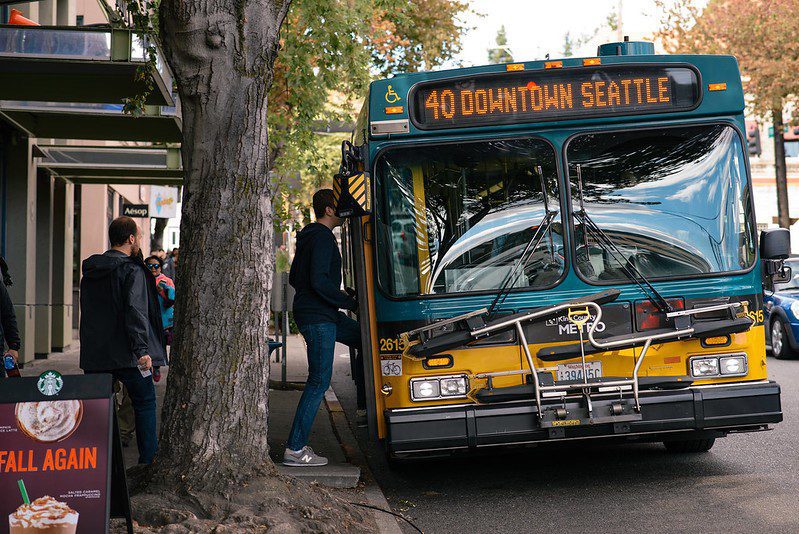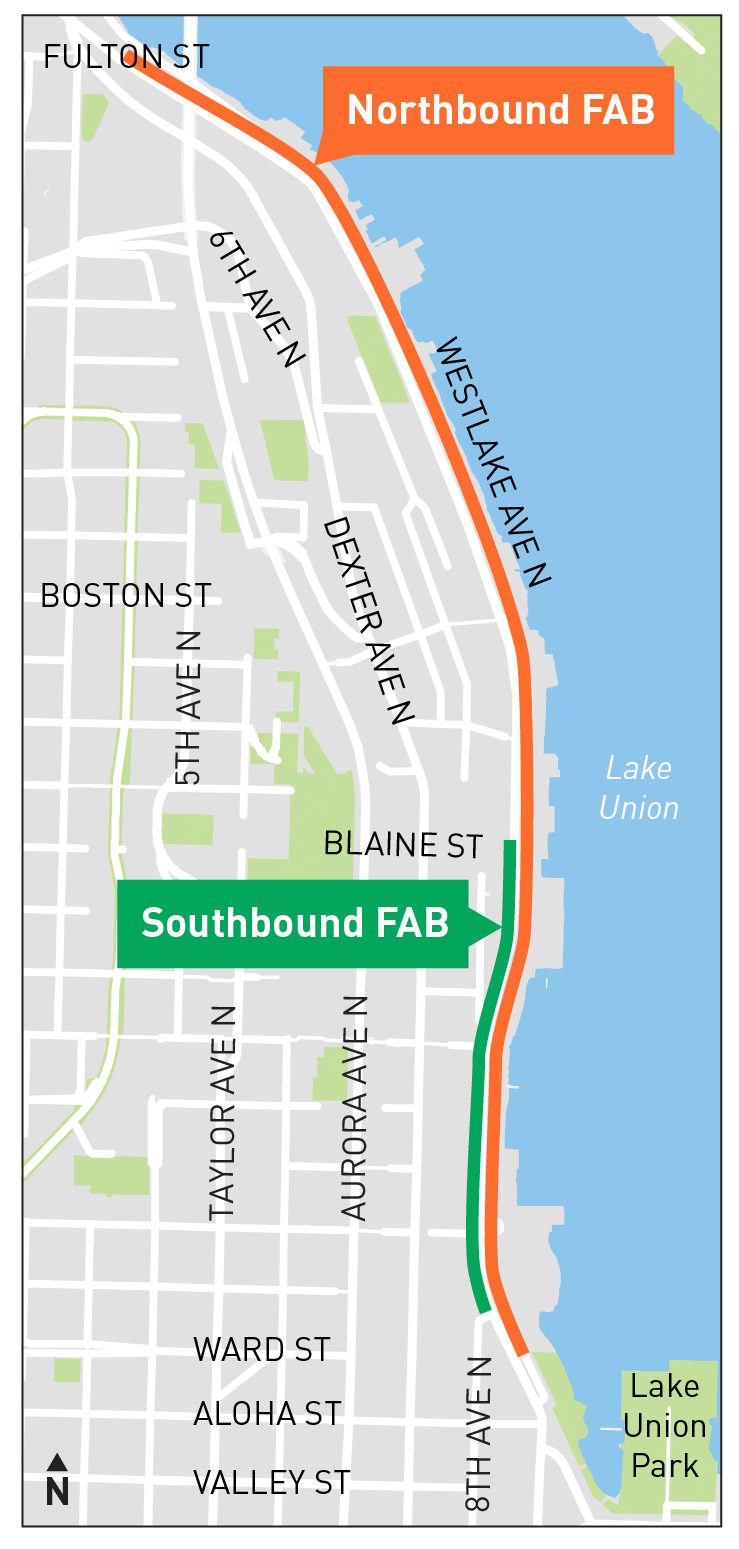 Riders board a King County Metro Route 40 bus in Seattle. Photo credit: SDOT
Riders board a King County Metro Route 40 bus in Seattle. Photo credit: SDOT Blog stats: 700 words | 4-minute read
At-a-glance:
- Freight-and-Bus Only Lanes (FAB lanes) are a tool we’re piloting to keep large freight trucks and buses moving reliably.
- FAB lanes will be piloted on Westlake Ave N south and northbound as part of the Route 40 Transit-Plus Multimodal Corridor Project.
- Once project construction is complete (expected in 2025-2026), the new FAB lanes will remain in effect 24/7 for a one-year trial period and be monitored by the Urban Freight Lab.
- This blog post highlights some of the key goals and additional background of the Route 40 project.
As part of the Route 40 Transit-Plus Multimodal Corridor (TPMC) project, we’re launching the first “Freight-and-Bus Only Lanes” (FAB lanes) in Seattle as a one-year pilot program. The new FAB lane will help keep people and goods moving through Westlake and connect communities along this important freight and transit corridor.
What is the FAB lane?
To keep freight moving reliably along Westlake Ave N, a major truck street, we’re piloting new FAB lanes. People driving freight vehicles over 26,000 pounds (about the size of a garbage truck, large box truck, or semi-truck) will be able to use bus lanes to travel along the corridor. Commercial loading activities will only be permitted in designated locations separate from the FAB lane.
Our traffic analysis shows that the FAB lanes are expected to help keep freight moving along Westlake Ave N, improve transit travel time, and have little impact on general purpose traffic.
By adding FAB lanes to the project, we expect to reduce travel times and improve trip reliability for transit and freight along the Route 40 corridor. We have a goal of reducing peak transit travel times by 5% to 10% and making the time between buses more consistent so riders can rely on trips to take about the same amount of time, no matter the time of day.
We thank neighbors and businesses along the project corridor who have provided us with feedback throughout the past three years of planning and design. This new pilot FAB lane pilot project is in response to their robust input and will help ensure fast, reliable transit service while keeping goods and services moving.
What’s happening now?
In November 2023, we announced the final designs for the Route 40 project! You can read our announcement here. Later this year, we will reach out to neighbors to better understand how to best coordinate with them during construction. Construction is expected to begin in the next few months.
After the FAB lanes are installed and construction is complete in 2025-2026, people driving will still be able to make right turns into driveways, parking lots, and intersections to access their homes and businesses.
Design details:
- Convert one northbound travel lane on Westlake Ave N to a FAB lane between Aloha St and where the Aurora Bridge crosses over Westlake Ave N.
- Convert one southbound travel lane on Westlake Ave N to a FAB lane between Blaine St and Aloha St.
- Travel lanes on the Fremont Bridge remain the same as today.
FAB lane map

Next steps
- We’ll continue to share updates as we prepare for Route 40 project construction and as the project is implemented. We’ll also share more information once the Route 40 project is complete, and keep the community engaged on how the improved corridor is operating.
- The FAB lanes will be piloted for one year after Route 40 project construction is complete (anticipated in 2025-2026).
- Following the trial period, we will review data and consider input from freight and bus operators to help determine if the FAB lanes should be installed permanently along Westlake Ave N and be added to our toolbox for other streets in Seattle.
- The new bus lanes will remain in place following the Route 40 project completion.
More about the project
- King County Metro’s Route 40 has the 5th highest ridership in King County, averaging just over 7,700 daily boardings on weekdays according to King County Metro Fall 2023 data.
- It serves the Northgate, Crown Hill, Loyal Heights, Ballard, Fremont, South Lake Union, Downtown Seattle, and Pioneer Square neighborhoods.
- More than 95,000 people live within a half-mile of Route 40!
- Over the past few years, we’ve been working with Metro and the community to find ways to make this bus route more predictable and reliably on time.
Stay informed
- Read more about the history of this project on our blog and the project webpage.
- Watch our project update video.
- Sign up for email updates.
- Contact the project team at Route40@seattle.gov or (206) 775-8731 with questions.